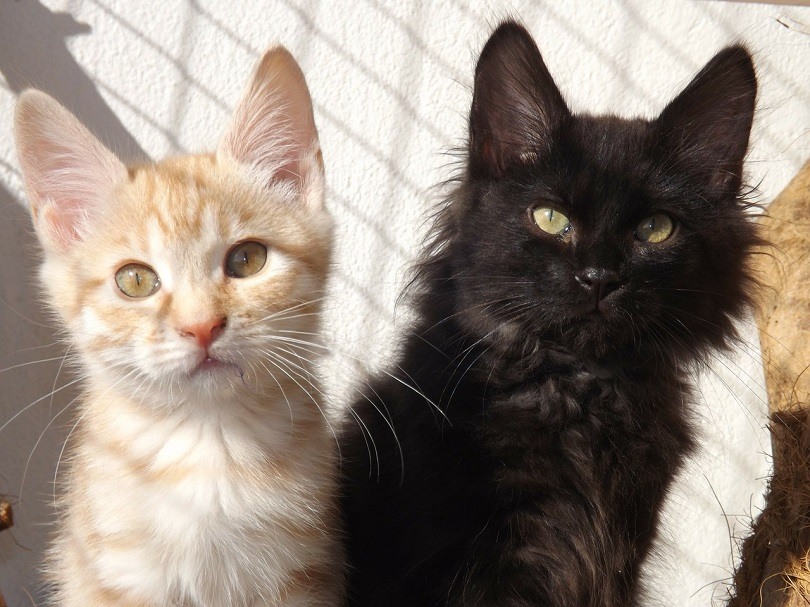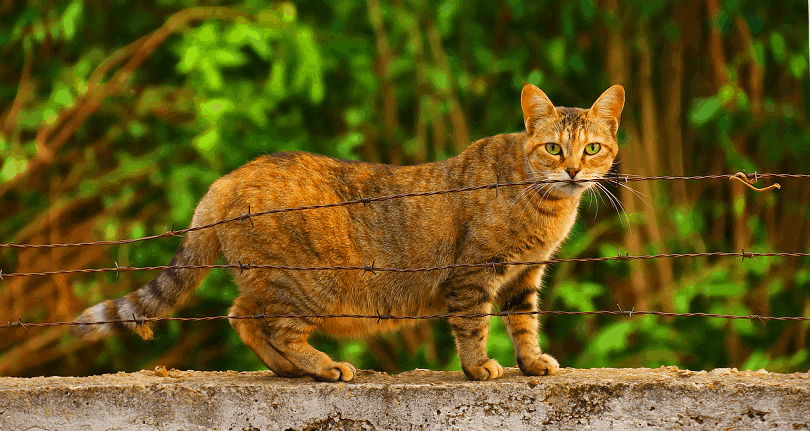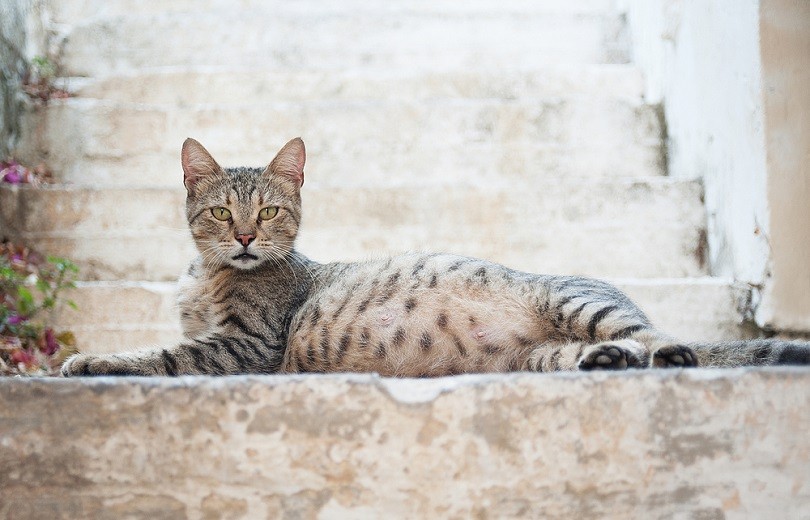Click to Skip Ahead
A cat’s fertility and reproduction remain unrivalled as kittens grow into sexual maturity sooner than you might expect – as young as 4 to 6 months – meaning your cat can get pregnant as early as four months!
For this reason, it would be best to understand what to expect when your kitty enters the breeding stage, whether you intend to breed it or not. This knowledge will help you make informed decisions about your pet’s health and prepare you to handle a cat’s pregnancy.
At What Age Can Kittens Get Pregnant?
Believe it or not, your four-month-old tiny kitty can get pregnant if she hits puberty by this age. That’s too early. A cat can have their first estrus cycle (heat cycle) from 3½ months to when they reach puberty. Cats are seasonally polyestrous, which means that, unlike dogs with two heat cycles annually, a kitty can have multiple cycles in a year.
If the queen hasn’t been spayed to prevent unwanted pregnancies, she can keep going into heat every two to three weeks, making her capable of reproducing much more often. Although an indoor cat my cycle all year round, the breeding season can vary according to the temperature and daylight hours. A kitty’s reproductive activity can be triggered by an increase in daylight and favorable weather.
For instance, an outdoor cat living in the Northern Hemisphere will most likely get pregnant in March, April, and May and reduce from October to January. On the other hand, indoor cats are usually viable all year round.
Although a queen can breed at any time as long as she’s in heat, ovulation can only occur when she mates with a male cat. Cats are induced ovulators, which means that the act of mating stimulates the release of eggs.

However, this stimulation may require several matings within 24 hours, and queens can mate with several tomcats within this period. Since it only takes a minute or two for the pair to mate, the action can occur multiple times in a short time, making it possible for a litter of kittens to have different fathers.
Generally, each queen’s heat cycle lasts up to six days, and they will go out of the heat for a while if you don’t breed them during this time. They’ll be able to get back into heat within 3 weeks.
A responsible cat parent will always know if their cat is in heat. The reason is that your cat will start experiencing behavioral changes to show that she’s ready to be bred.
- Vocalization—your kitty will start yowling and meowing very loudly as if she’s in pain to attract a mate.
- Overly affectionate or clingy behavior, even towards strangers.
- Elevating and swaying her backside in the air.
- Frequent urination and increased odor.
- Attempts to escape outside the home to find a mate.
- “Assuming the position” every time you touch around the hip area.
Do Cats Mate with Their Siblings?
Felines are indiscriminate and have no concept of relatives or family. Therefore, unspayed cats can mate with their family members once they are sexually mature.
Similarly, litter kittens are not off-limits to parents and often breed with their offspring. Unfortunately, inbreeding causes higher rates of genetic issues among cats.

Do Cats Get Pregnant on Their First Try?
A cat can get pregnant on the first try during their first estrous cycle. The gestation period usually lasts 60–63 days. Unfortunately, this increases chances for accidental breeding, which is why cat parents should spay or neuter their female feline friends before their first estrous cycle.
But then, it can be hard to predict when the initial heat will happen. Therefore, some veterinarians recommend conducting a spay operation or surgical sterilization (ovariohysterectomy) before the kitty is 3 months old.
In case your kitty goes into heat before you spay them, you’ll have to reschedule the operation after she finishes her cycle because of the increased risk of bleeding during surgery.
What Age Does a Male Kitten Become Sexually Active?
Although male cats don’t experience heat, unneutered males reach sexual maturity around the same time as the queens, between 4 and 6 months. Similarly, they may exhibit behavioral changes like escape attempts to find a mate, urine marking, and smelly urine.
What Age is Safe to Breed a Cat?
Cat breeding shouldn’t be taken lightly, and it’s best to research thoroughly beforehand. When females are 18 to 24 months old, it’s safe to breed them, and a vet should examine cats over 7 years old before mating.

Can a 10-Year-Old Cat Get Pregnant?
As a responsible owner, it would be best to refrain from breeding your cats until the queen is at least a year old. If you fail to wait until she’s fully grown, it can damage her health as she’ll use up her energy reserves.
For this reason, the safest age to breed a cat is when the queen is 18-24 months old, healthy, and in a sound body condition. Interestingly, kitties never outgrow the heat cycle by hitting menopause, and you can even breed an old kitty as old as 10. However, it does not mean that you should breed an elderly kitty since they are more prone to pregnancy-related issues, such as miscarriages.
Is it Bad to Breed Cats?
Breeding cats is okay if you are a responsible and ethical breeder.
Do Cat Breeders Need a License?
Ensure that you are in line with updated guidelines and rules before breeding a cat. Although cat breeding guidelines are yet to be legally implemented, there are established bodies that dictate and govern cat breeding.
For instance, the Pet Animals Act 1951 protects cat breeding and requires feline breeders to be licensed to breed and sell cats via pet shops or at home. The act helps discourage backyard breeding.
Most backyard breeders do not administer vaccinations or provide vet care to their kitties.

Final Thoughts
Since there are several myths regarding a cat’s fertility and reproduction, it’s best to stay informed before allowing your cat to get pregnant. Yes, a responsible cat owner should be in control when their female cats should get pregnant.
However, you can avoid the pregnancy by spaying and neutering them at an early age. Being responsible will help reduce birth complications and unwanted cat pregnancies that lead to abandoned cats in shelters and stray cats on the streets.
As usual, always seek help from your veterinary officer before breeding your kitty.
Featured Image Credit: Jim Polakis, Shutterstock













